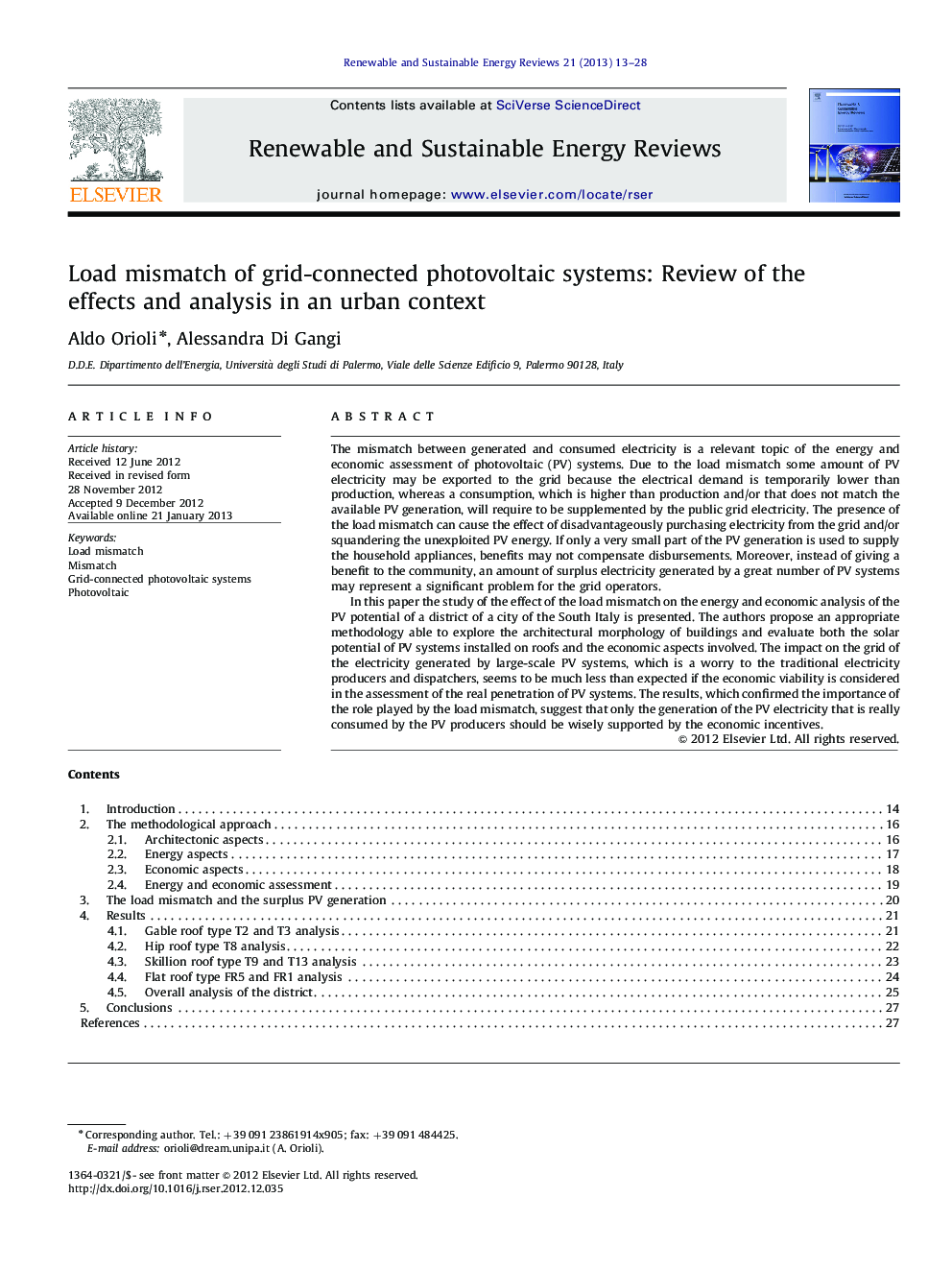| Article ID | Journal | Published Year | Pages | File Type |
|---|---|---|---|---|
| 1750128 | Renewable and Sustainable Energy Reviews | 2013 | 16 Pages |
The mismatch between generated and consumed electricity is a relevant topic of the energy and economic assessment of photovoltaic (PV) systems. Due to the load mismatch some amount of PV electricity may be exported to the grid because the electrical demand is temporarily lower than production, whereas a consumption, which is higher than production and/or that does not match the available PV generation, will require to be supplemented by the public grid electricity. The presence of the load mismatch can cause the effect of disadvantageously purchasing electricity from the grid and/or squandering the unexploited PV energy. If only a very small part of the PV generation is used to supply the household appliances, benefits may not compensate disbursements. Moreover, instead of giving a benefit to the community, an amount of surplus electricity generated by a great number of PV systems may represent a significant problem for the grid operators.In this paper the study of the effect of the load mismatch on the energy and economic analysis of the PV potential of a district of a city of the South Italy is presented. The authors propose an appropriate methodology able to explore the architectural morphology of buildings and evaluate both the solar potential of PV systems installed on roofs and the economic aspects involved. The impact on the grid of the electricity generated by large-scale PV systems, which is a worry to the traditional electricity producers and dispatchers, seems to be much less than expected if the economic viability is considered in the assessment of the real penetration of PV systems. The results, which confirmed the importance of the role played by the load mismatch, suggest that only the generation of the PV electricity that is really consumed by the PV producers should be wisely supported by the economic incentives.
